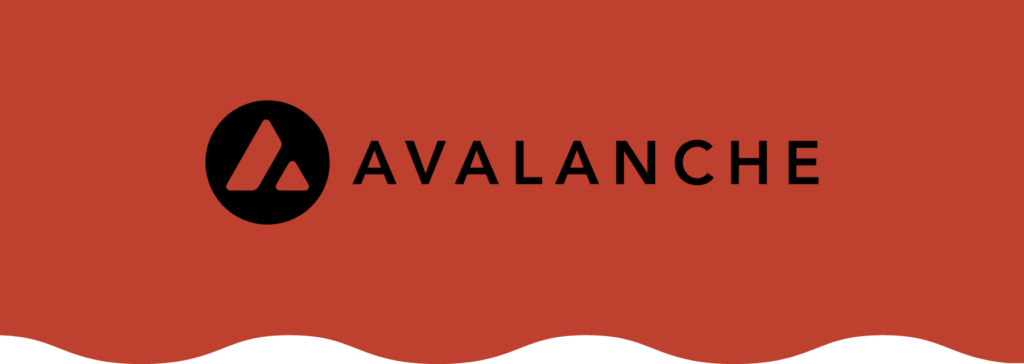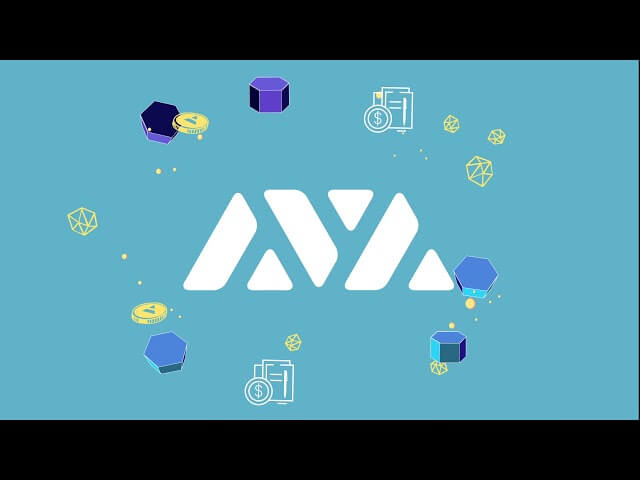Avalanche (AVAX)
Building the Internet of AssetsAn energy efficient third-generation smart contracts platform and cryptocurrency, Avalanche has quickly grown into a thriving Web3 ecosystem. Its native token, AVAX, is now one of the top-20 cryptos by market capitalization. In this guide, we’ll tell you everything you need to know about Avalanche and AVAX.

What is Avalanche (AVAX)?
Avalanche is a 3rd generation smart contracts platform and cryptocurrency, designed to support DApps (decentralised applications). It is optimised for fast, low-cost transactions and high scalability, and claims to be more eco-friendly than other blockchains.
Although Avalanche was developed by a team at Cornell University, the fundamentals of the protocol were first shared in May 2018 by a pseudonymous group known as ‘Team Rocket’, via the InterPlanetary File System (IPFS). The Cornell team was led by Turkish-American computer science professor and software engineer Emin Gün Sirer. He was assisted by Maofan “Ted” Yin and Kevin Sekniqi, who were doctoral students at the time.
When it launched as an open-source platform in September 2020, Avalanche was the first of its type able to confirm transactions in under one second – indeed, its developers referred to it as “blazingly fast.” Like Polygon, Avalanche enables developers to easily build and deploy bespoke blockchains.
| Did you know? An unusual feature of Avalanche is that it does not punish misbehaving or malfunctioning nodes by so-called ‘slashing.’ Slashing is when other network participants punish a misbehaving node by kicking it off and draining its stake. Source: Avalanche |
Avalanche Basics
The Avalanche network uses a unique proof-of-stake consensus mechanism called Avalanche Consensus. This is far more efficient than either Classical Consensus or Nakamoto Consensus types, allowing millions of participants to validate while processing thousands of transactions per second. AVAX tokens are required to pay transaction fees and used to secure the blockchain.
Avalanche Blockchain
Avalanche uses three different blockchains to solve the limitations of the blockchain trilemma (the idea that decentralised platforms can only successfully accomplish two of the following: security, scalability and decentralisation):
- X-Chain / Exchange Chain – for creating and trading digital assets
- C-Chain / Contract Chain – for smart contracts
- P-Chain / Platform Chain – for staking and validating AVAX
Developers can build their own bespoke blockchain networks, with custom virtual machines, called Subnets, that can interoperate with the wider Avalanche ecosystem and benefit from network effects.
AVAX Issuance and Staking
New AVAX tokens are minted and rewarded for adding new blocks to the Avalanche blockchain. The size of rewards, and hence the minting rate, is determined via AVAX holders voting. Network validators must stake at least 2,000 AVAX and are selected based on the amount of AVAX tokens they have staked – the more staked, the more likely to be chosen.
AVAX Supply
The total supply of AVAX tokens is limited to 720 million. According to Wikipedia, as of 2- August 2022, there were 284,987,716 AVAX circulating.
Avalanche Adoption & Usability
Many see Avalanche as a faster, cheaper alternative to Ethereum, and it is attracting a growing number of DApp developers.
At the time of writing, Avalanche was becoming popular with the Web3 gaming community, attracting titles including Crabada, DeFi Kingdoms, Ascenders, Shrapnel: Carpe Fortuna, Ragnarok, and Wild Life. Regulated institutions including Aave, Jump Crypto, Valkyrie Investments, and Securitize were also deploying Subnets on Avalanche, taking advantage of native KYC functionality particularly.
Thanks to its fast, low-cost transactions, AVAX is also becoming popular as a cryptocurrency for payments. Although more retailers and service providers are starting to accept it, AVAX is nowhere near as widely supported as cryptos like BTC, ETH and DOGE.
Avalanche Fees & Speed
The Avalanche network is capable of processing around 6,500 transactions per second, compared to Ethereum’s 15 (however, when Ethereum’s planned upgrades have all been implemented, that should rise to around 100,000 per second). Like Ethereum, Avalanche transactions are subject to gas fees, but they are typically much lower, often at around $1. However, there have been times when, due to congestion, fees have seen tenfold increases or more.
| Did you know? Coca-Cola, the world’s most recognisable soft drinks company, released a limited edition NFT collection on Polygon in 2022 as part of its exploration into Web3. Source: The Motley Fool |
Avalanche Security and Safety
In a similar way to Polygon, Avalanche enables smaller projects to benefit from the high levels of security provided by a large network. This makes the Avalanche ecosystem extremely secure, but, as with all cryptos, AVAX can still be vulnerable so you should exercise best practice.
Security and safety tips:
- Don’t leave your AVAX on exchanges. Use exchanges for buying and selling only. Always transfer your crypto to a local wallet for short-term storage.
- For long-term storage, keep your crypto in a hardware wallet.
- Always keep your wallet keys in multiple safe places – they cannot be recovered.
- Never tell anyone about your crypto holdings. No matter how secure your storage is, if you or your loved ones are physically threatened, you’ll probably hand over your personal keys.
AVAX Volatility
Like most cryptos, AVAX reached record highs in the great crypto bull run of late 2021. Indeed, according to CoinGecko, on 21 November 2021, it hit US$144.96. However, at the time of writing in late October 2022, it was trading around $2.80. Despite this price crash, the Avalanche network has continued to grow.
Final Word on Avalanche (AVAX)
Avalanche is one of those projects like Ethereum and Polygon, in that it is so much more than a cryptocurrency. It is a complete digital asset ecosystem, and the AVAX token plays a key role in facilitating it. Given this, it seems that as long as the wider Avalanche system is growing, AVAX itself has a lot of potential. Of course, with low fees and fast transactions, it’s also a useful crypto for everyday payments in its own right.

